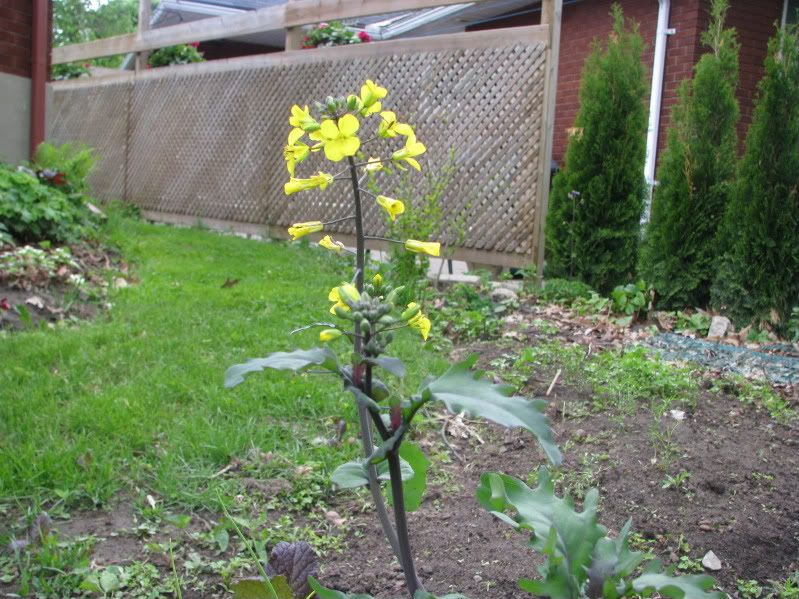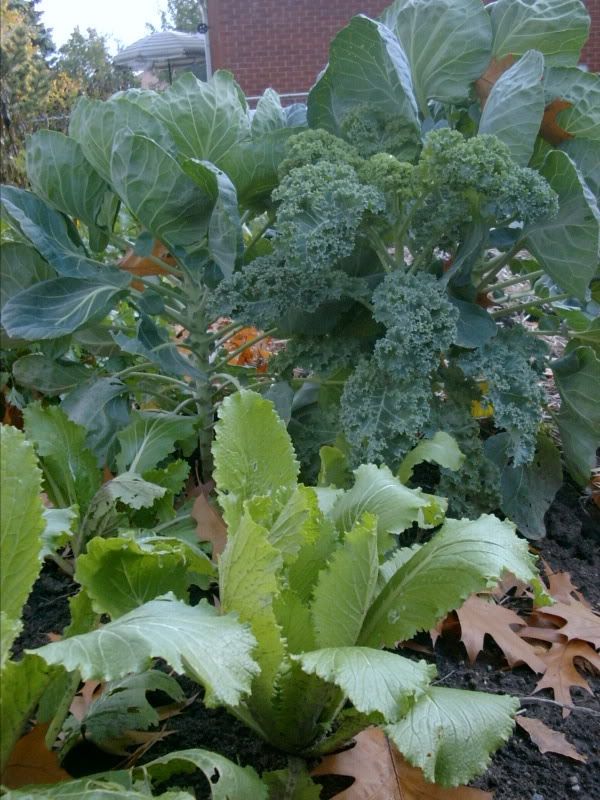
Red Ursa kale in flower.
* For genetic vigour, plant a variety of kale and let at least 10 go to seed. (I'm just bluffing on the number but it's more than 5 and less than 50. 10 is the number I try to have to go to seed but on bad years, it can be fewer. A fellow blogger saves cabbage seed from as few as three surviving heads so fear not! You can always add to your genetic stock by planting new varieties and letting them cross with your old ones).
How to grow kale
Why not trying winter sowing it? Some time in the depths of winter, take a break from browsing those garden mags, and throw some seeds in a mini greenhouse made of a recycled container (huh? Go to the site, you won't regret it) then let nature do the work. By mid-spring, you should have a kale plugs all ready for planting out.
Alternatively, you can start them around the same time that you start tomatoes, only put them outside when the weather is still cool even if mild frosts can be expected. Around here, I start mine around mid-March to early April and plant out sometime at the end of April to early May. If I plant out when snow still threatens, I use the tops of pop bottles as mini-cloches to create an enhanced growing environment.
You can also direct seed your kale mid-summer for a fall, even winter, harvest. They make good coldframe crops.
When the seedlings have a couple true leaves, you can carefully transplant them into their final spots. The rules of rotation recommends that you don't plant them in the same ground as another member of the brassica family more than every 3 or 4 years. Though less fussy than cabbage, cauliflower or other brassica aristocrats, they do appreciate a side dressing of compost or manure along with a steady water supply. They will also tolerate part shade.
With any luck, they will overwinter giving you broccolini, flowers and baby kale.

Dwarf Blue Curled Scotch kale hanging out with brassica buddies brussel sprouts and chinese cabbage.

3 comments:
What a timely post. I just posted a photo of the Tuscano Kale I planted in my window box.
Thanks for the great tips! We planted kale in our school garden last year. It's great for school gardens because you can harvest it as late as January --maybe even longer if you don't have much snow. Maybe we'll try wintersowing the Dinosaur this year!
When I discovered a handful of truly delicious kale recipes, my garden was transformed. Now we can't quite keep up with the demand.
Post a Comment